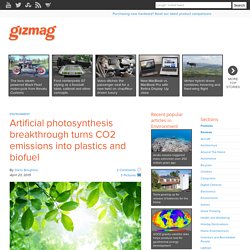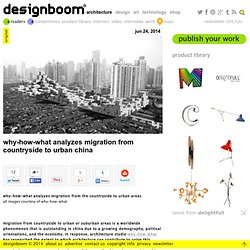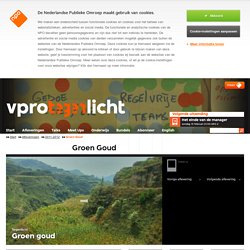

Europa is niet meer de mondiale speelbal van China en Amerika. (7) “Overheid offert 520.000 levensjaren!” blijkt uit WOB verzoek EZK van oud CBS directeur... LIVE FROM ‘EVENT 2021’ IN DALLAS, TX - The Highwire. The Chinese World Order (VPRO Backlight) Money, Gift and Society in the Age of Transition. Climate Change And Air Pollution Could Join Forces To Make The World Even Hungrier. Over the next 40 years, drought, erosion, and longer growing seasons brought on by climate change will radically alter the way food is produced all over the world.

But until now, climate predictions failed to consider another factor in the future of key crops: Air pollution. A new study from researchers at MIT and Colorado State University published in Nature Climate Change shows that ground-level ozone could exacerbate the effects of climate change on staple food crops like wheat, soybeans, maize, and rice.
If global industry and governance fail to reduce emissions, researchers predict that crop production could dwindle by as much as 15%. Researchers mapped out the tandem relationship between pollution and climate change in two scenarios. As a baseline, the MIT and Colorado State researchers estimate that climate change alone will result in a 11% decrease in global crop production. But some regions will be negatively impacted no matter what. [Image: Corn field via Shutterstock] Global Energy Projections for 2040. EmailShare 25EmailShare Meeting Future Energy Needs.

Courtesy General Electic. Abundance HD VPRO Backlight (English Subtitled) 2013. According To A Nasa Funded Study, We're Pretty Much Screwed. Our industrial civilization faces the same threats of collapse that earlier versions such as the Mayans experienced, a study to be published in Ecological Economics has warned.

The idea is far from new, but the authors have put new rigor to the study of how so many previous societies collapsed, and why ours could follow. Lead author Mr Safa Motesharrei is no wild-eyed conspiracy theorist. Motesharrei is a graduate student in mathematics at the National Socio-Environmental Synthesis Center, a National Science Foundation-supported institution, and the research was done with funding from NASA's Goddard Space Flight Center. "The fall of the Roman Empire, and the equally (if not more) advanced Han, Mauryan, and Gupta Empires, as well as so many advanced Mesopotamian Empires, are all testimony to the fact that advanced, sophisticated, complex, and creative civilizations can be both fragile and impermanent," the forthcoming paper states. Stephen Petranek: 10 ways the world could end. Artificial photosynthesis breakthrough turns CO2 emissions into plastics and biofuel. Scientists at the Lawrence Berkeley National Laboratory and the University of California, Berkeley have created a hybrid system of bacteria and semiconducting nanowires that mimics photosynthesis.

According to the researchers, their versatile, high-yield system can take water, sunlight and carbon dioxide and turn them into the building blocks of biodegradable plastics, pharmaceutical drugs and even biofuel. Although renewable energy is making up a growing portion of the world’s energy production, scientists have suggested that the current trends of CO2 buildup in our atmosphere are still likely to lead to serious consequences, and do so sooner than we had anticipated. One way to keep harmful emissions under control could be to trap the CO2 coming out of smokestacks using materials like polymers or sponges. Taking inspiration from Mother Nature, scientists have now devised a system that uses sunlight and water to convert carbon dioxide into a wide range of useful chemicals. Source: LBNL. Why-how-what analyzes migration from countryside to urban china. Jun 24, 2014 why-how-what analyzes migration from countryside to urban china why-how-what analyzes migration from the countryside to urban areasall images courtesy of why-how-what migration from countryside to urban or suburban areas is a worldwide phenomenon that is outstanding in china due to a growing demography, political orientations, and the economy. in response, architecture studio why-how-what has researched the extent to which architecture can contribute to solve this problem. taking into account the main economical, sociological, environmental aspects, this integrative approach analyzes and discusses the chinese housing crisis and its history, the specific case of shanghai, and the solutions for chinese cities considering shanghai as a place for experimentations. diagram showing the typical development of a new Chinese city in relation with the existing urban pattern diagram comparing the two existing typologies in china with an alternative for urban village model photo.

IfItWereMyHome.com. Groen Goud. Al meer dan 15 jaar is de cameraman en ecoloog John D.

Liu bezig met zijn wereldwijde missie om woestijnen te vergroenen en biodiversiteit te herstellen. Het begon allemaal in 1995 toen Liu het Löss-plateau in China filmde. Hij zag hoe de lokale bevolking een gebied bijna zo groot als Nederland veranderde van een dorre, uitgeputte woestenij in een grote groene oase. Die ervaring veranderde zijn leven. Vanaf dat moment reist John Liu de hele wereld af om regeringsleiders, beleidsmakers en boeren met zijn beelden en kennis te overtuigen en te inspireren.
Tegenlicht volgde Liu op zijn missie in Jordanië en laat aan de hand van Liu’s eigen filmmateriaal zien dat een groene toekomst wereldwijd mogelijk is. Samenstelling: Jeroen van den Berk / Gijs Meyer Swantee Regie: Rob van Hattum / John D. The Most IMPORTANT Video You'll Ever See - FULL LECTURE - AlBartlett.org. Earth 2025 : POPULATION EXPLOSION - AFTERMATH (Full Documentary)